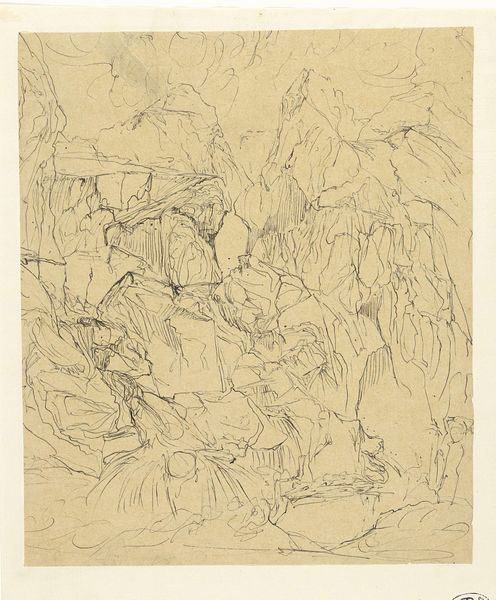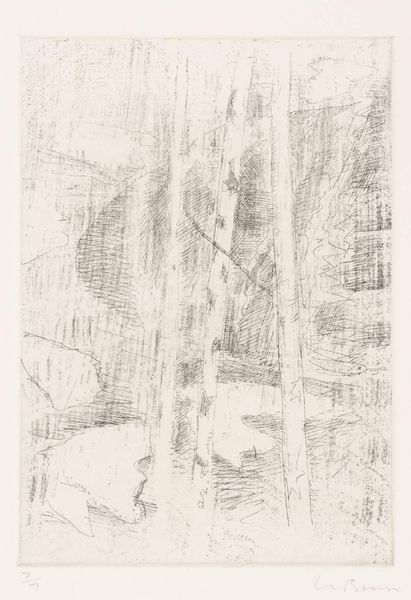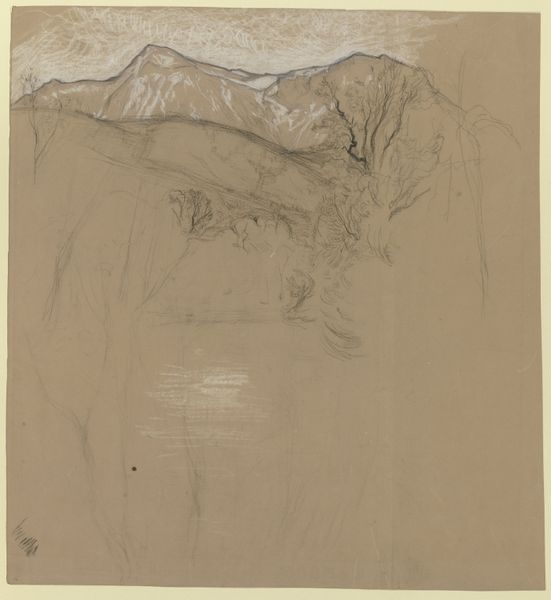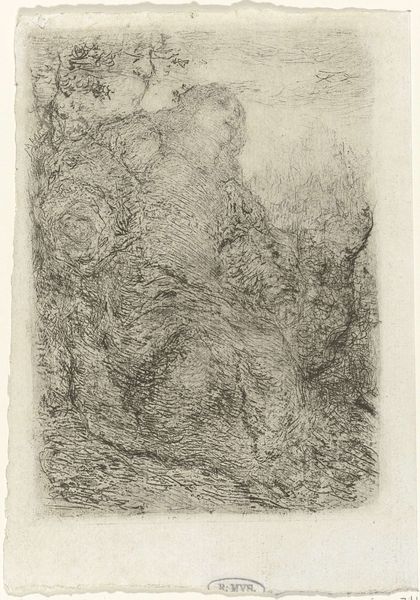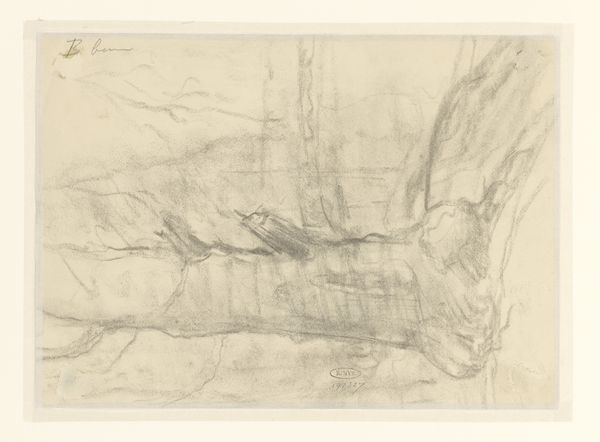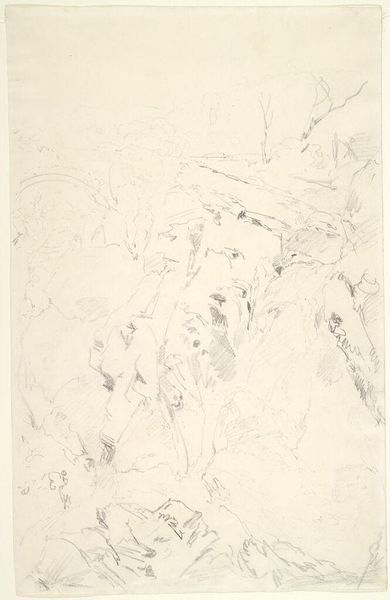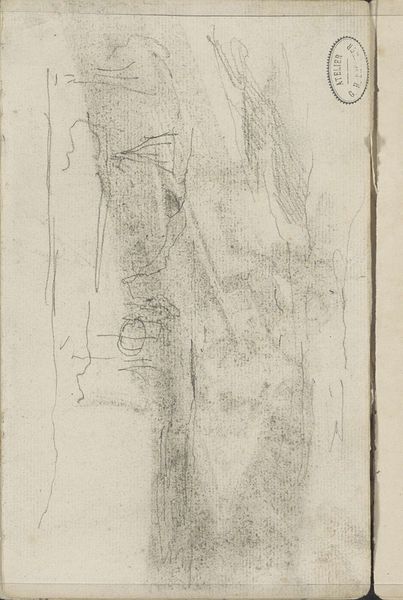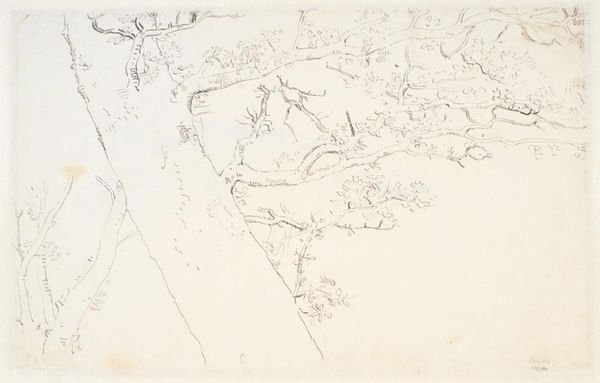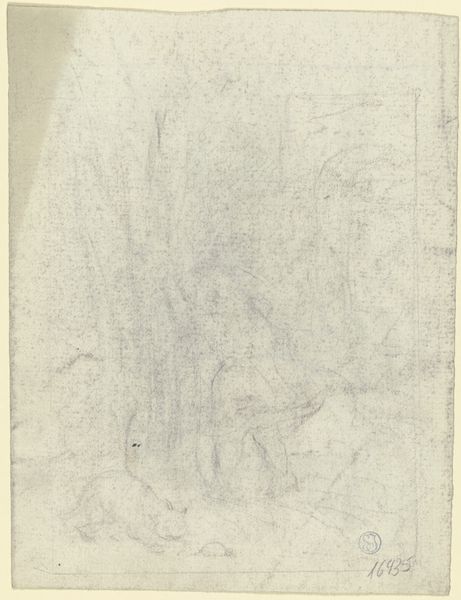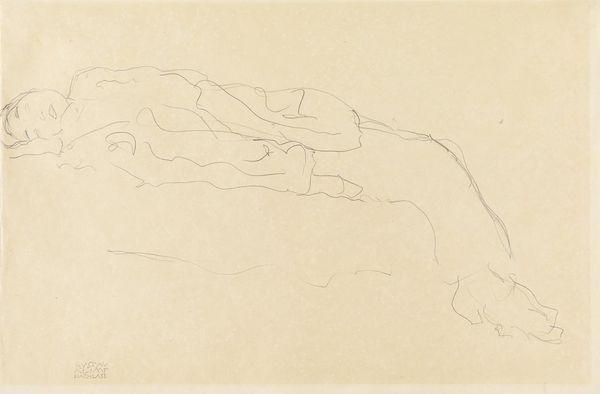
drawing, pencil
#
drawing
#
pencil sketch
#
landscape
#
etching
#
pencil
#
realism
Dimensions: height 180 mm, width 126 mm
Copyright: Rijks Museum: Open Domain
Curator: Here, at the Rijksmuseum, we see "Sketch of a Landscape" by Jozef Israëls, likely created between 1834 and 1911, employing pencil as his medium. Editor: Mmm, ghostlike! I feel a shiver, not just from the landscape's apparent bleakness, but the delicacy of the drawing itself. It’s like catching a wisp of memory on paper. Curator: Precisely. Israëls, associated with the Hague School, often depicted the lives of ordinary people. Considering this, and the rise of social realism in the Netherlands at the time, it invites us to consider land ownership, labour and perhaps even rural poverty and its representation within landscape art. Who owns this space? How is the natural world depicted in connection with everyday experience? Editor: Yes, there is a weight there. But I am really stuck on this ephemeral quality! I wonder if it's intentional, perhaps hinting at the transient nature of life itself, set against the perceived permanence of the land? You know, the way smoke just kind of…forms and reforms... It also brings to mind all that pressure and art-world expectation to create a perfectly realized, technically stunning masterwork. He resisted! How cool. Curator: The sketch aligns perfectly with an era where artists began questioning academic traditions. Israëls work challenged conventions to depict modern reality with raw honesty, critiquing idealized landscape paintings which conveniently forgot human labour and conflict. His art aimed to be accessible, fostering social empathy for rural life. The stark contrasts further reinforce this idea. Editor: Accessibility for all! Not just the upper crust or stuffy art world elites. To heck with them, this feels radical in its quiet way, pushing against expectations and constraints of the era... And kind of a relief. Curator: Exactly, by understanding the societal implications, this "simple" sketch becomes a vehicle for progressive ideology. Israëls’ choice wasn't just stylistic. Editor: So it is more than meets the eye…well I think I will spend just a little more time here with the ghosts. Curator: And I am glad it opened up an entrypoint for exploring the artwork with sociohistorical contexts in mind. Thank you.
Comments
No comments
Be the first to comment and join the conversation on the ultimate creative platform.
